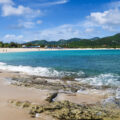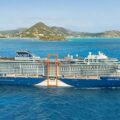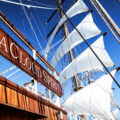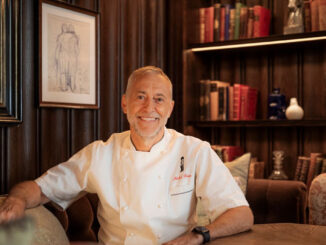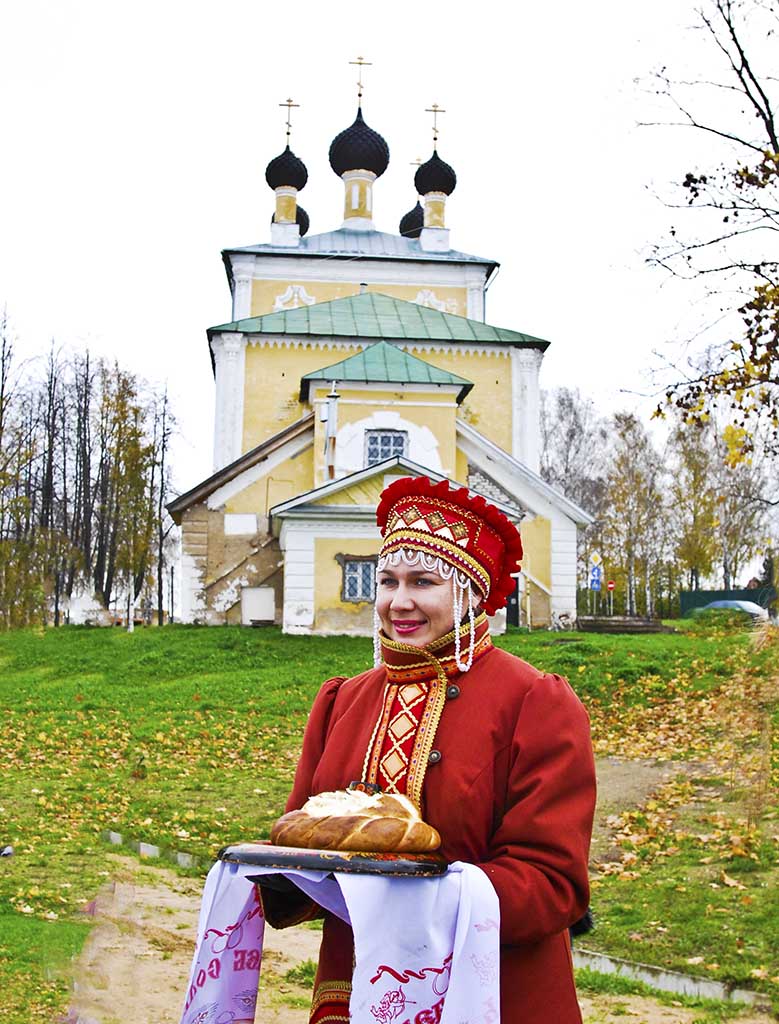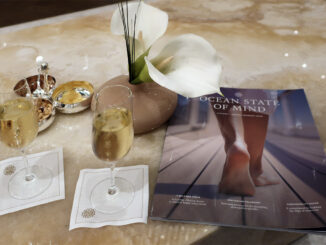
Signs along the narrow, winding road up Brimstone Hill caution Drive Slowly. You hardly need to be reminded, because the steep up this hill that should be called a mountain is strenuous even for the local goats.
We’re fortunately in a van whose driver, Asim Liburd, regularly does the drive up to the spectacular fortress that’s a UNESCO world monument on the lush island of St. Kitts. The trek requires honking your horn at every blind hairpin curve and winding through tight gateways only inches wider than the van.
It’s an adrenaline pumping experience to start a day exploring old and new attractions on St. Kitts from a cruise in the Leeward Islands aboard Celebrity Ascent. We want to see as many highlights on this island with hundreds of years of history as possible in our eight hours ashore.
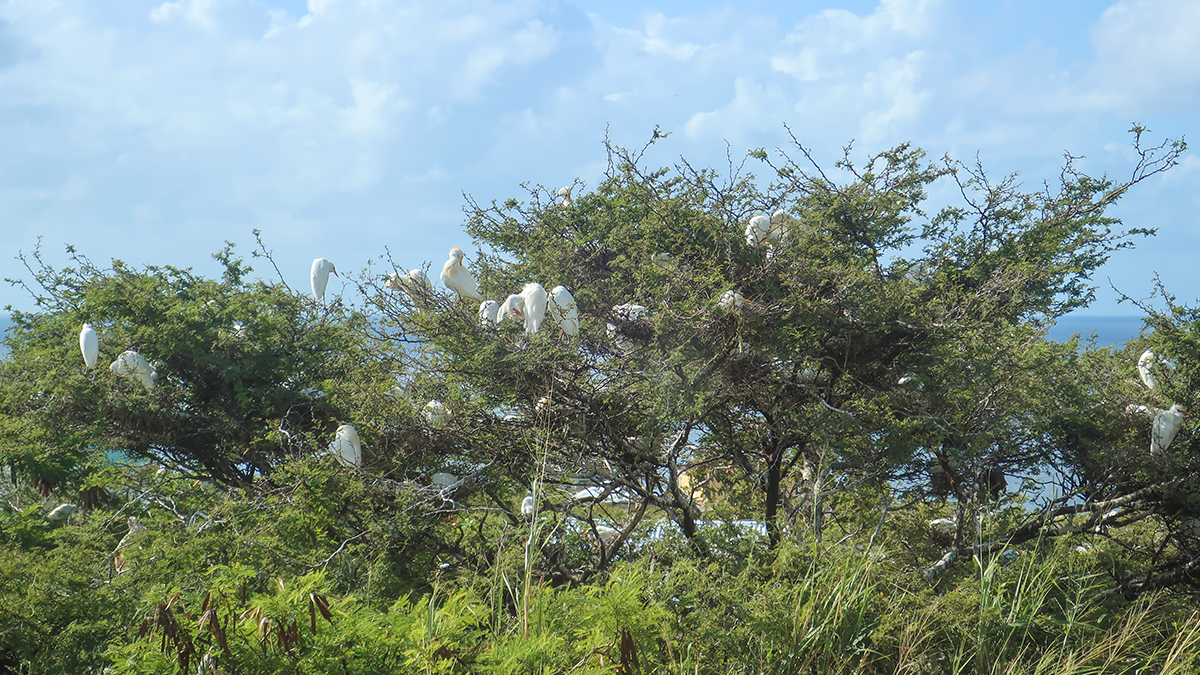
Britain’s bastion built of basalt
Even if there wasn’t a 17th century world landmark here, the view from the top of Brimstone Hill would be worth the climb. It was located for is commanding panorama of the Caribbean and the lush inland valleys. Britain turned it into an imposing fortress to enforce its claim on the rich sugar cane fields in the middle of the island it shared with France, that had ambitions to claim it all.
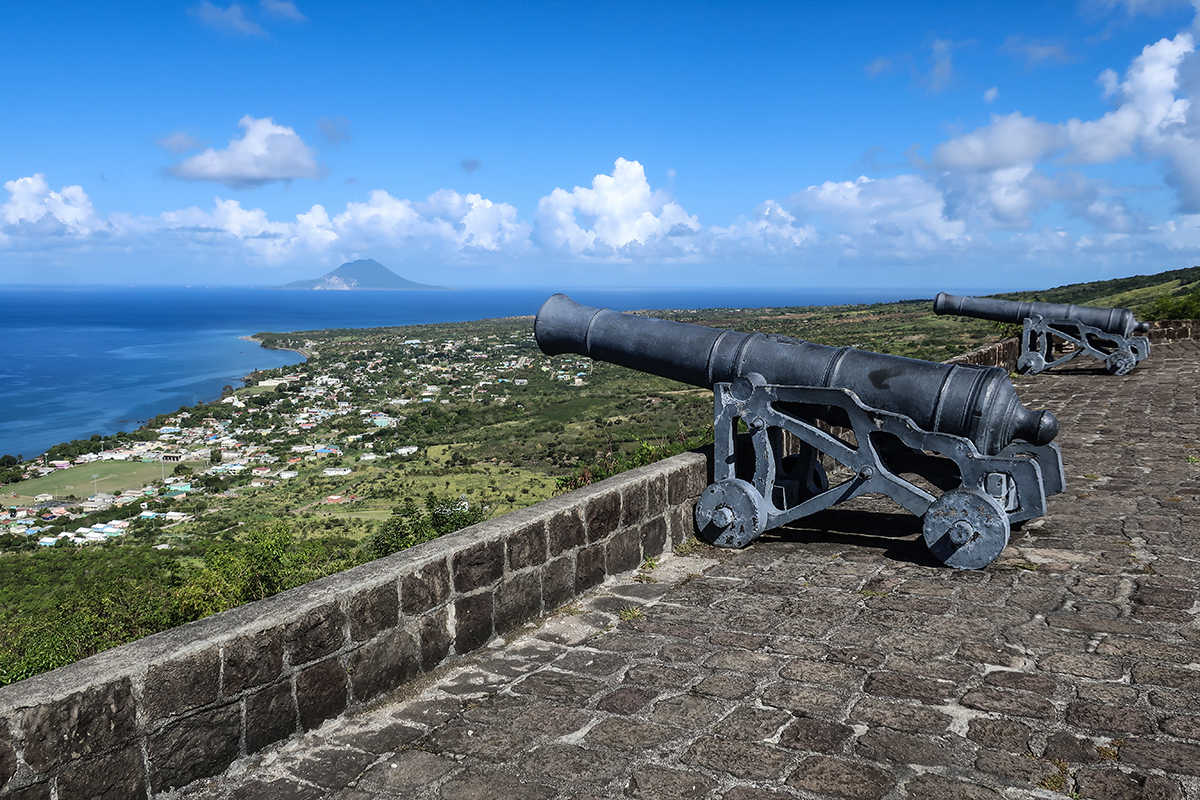
We’re among the first to arrive on a day when three big cruise ships are in port in the capital Basseterre. It will get crowded later, but now we can climb the stairway to the fort and imagine what it might be like to be stationed here far from home in England. Be cautious walking the parapets lined with cannons though, because there aren’t any guard rails along the outlooks and it’s a long way down if you go over the edge.
The engineering is ingenious. We’re at the top of a stone cliff where drilling a well would be pointless. So every surface is grooved to feed rainwater water that falls on its stone floors through troughs into a central water cistern.
This fort is a legacy of the messy jostling for Empire between Britain and France three centuries ago. For most of the 1600s, the ends of St. Kitts, aka St. Christopher, were under French rule while Britain held the middle and built this town-sized collection of fortifications and military garrison ringed with huge cannons. An unfortunate truth in that history is that African slaves who were brought here to work in the sugar plantations did most of the heavy lifting of huge lava rocks and limestone that had to be hoisted up the cliff on their backs. Back then, there were many more enslaved Africans in St. Kitts than people of European descent.
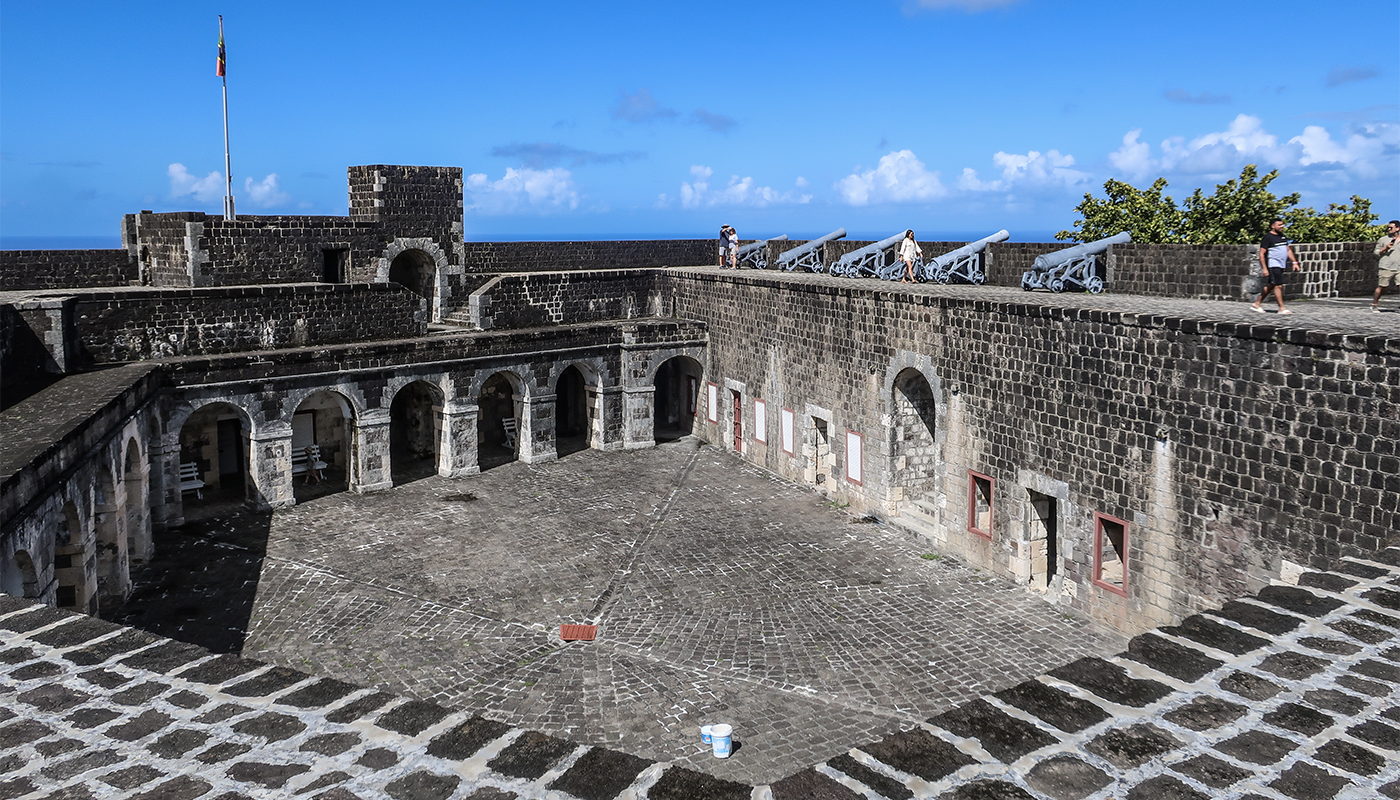
The heavy stone walls proved their strength in a long siege in 1782 by thousands of French troops who outnumbered the 1,000 British defenders from the Royal Scots and East Yorkshire Regiments in the fort. It finally fell to the French, but all that effort soon proved to be futile, as the island and its fort was handed back to Britain without a shot just a year later by the Treaty of Versailles. St. Kitts became solely British after another treaty divvied up Caribbean island claims in 1713. The fort wasn’t needed again and was decommissioned in the 1850s , with impressive restorations as a tourist attraction in recent years.
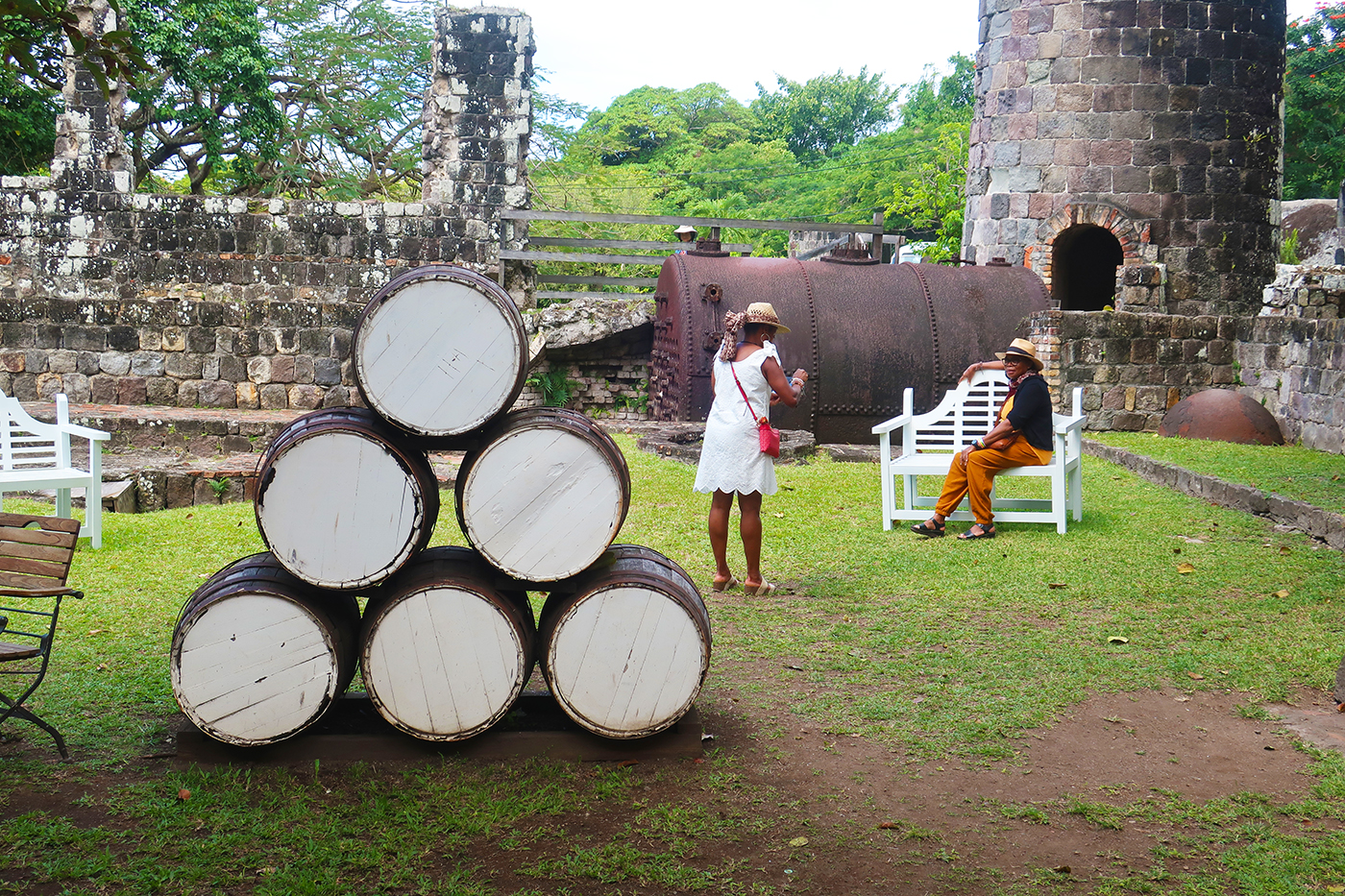
On the old rum road
Sugar was a valuable crop, but what St. Kitts made from it was the reason the island was considered a prize by both sides. Our next stop is the Old Road Rum Company whose huge stone distillery dates back to 1681, making it the oldest surviving rum distillery in the Caribbean. The ruins of the original dome-shaped distillery known as the Wingfield Estate with its wood-fired copper cauldrons to boil down the sugar for rum-making are still open to the public. The original aqueduct still carries water from the hills to the site and its massive chimney which must have been an engineering feat to build without modern cranes is still intact.
Of course, there are tastings of Old Road Rum, which today is still is hand bottled on the site by a St. Kitts local, Jack Widdowson, who is committed to re-igniting small-batch Rum production on the island.
A rum tasting set us up for a beautiful scenic drive out to the south end of St. Kitts, along the ocean, passing Frigate Bay and the Great Salt Pond, which was another industry that made the island coveted in the age of Empire. St. Kitts has been independent of Britain since 1983 and the main industry today is tourism.
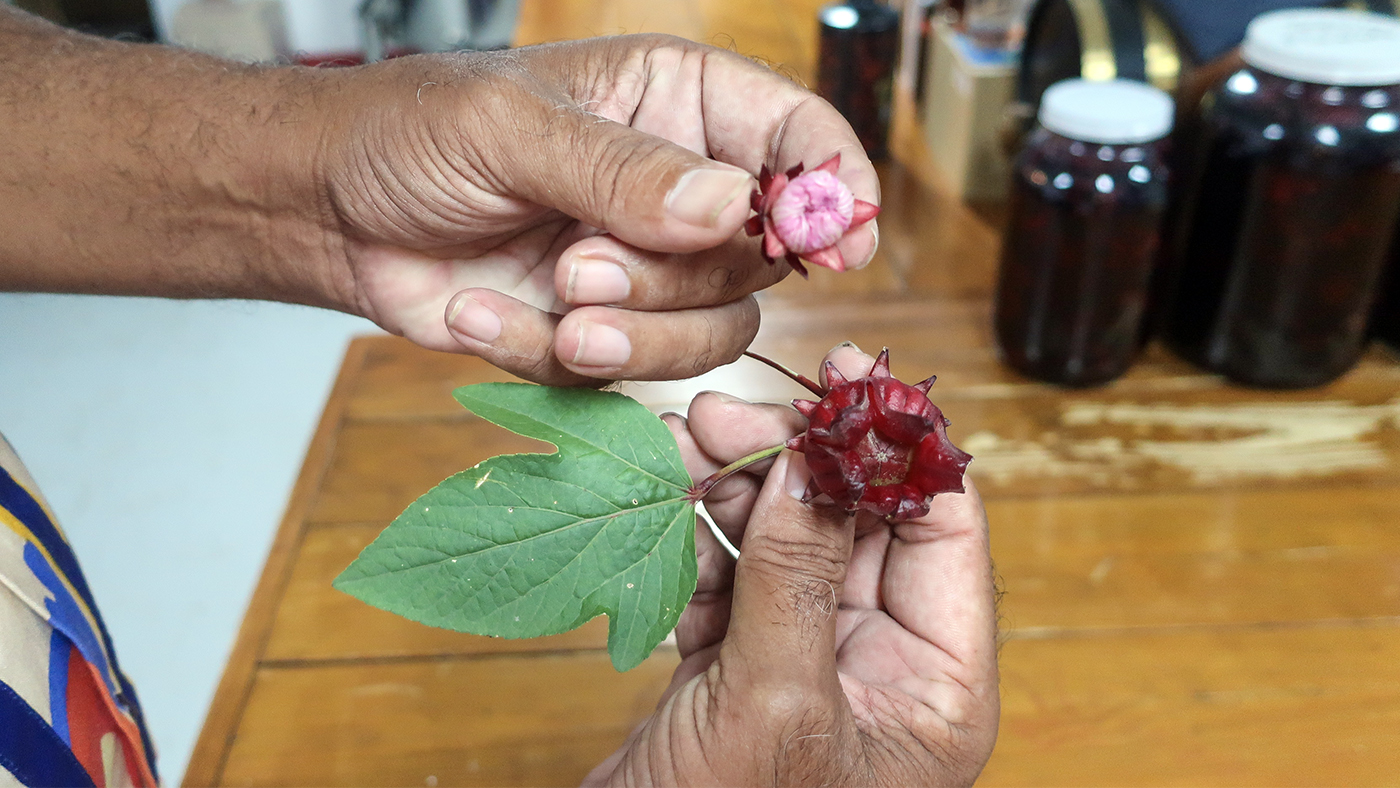
The new rum and gin at The Spice Mill
Our next stop was a modern distillery that uses high technology to make innovative flavors of rum and gin.
Roger Brisbane, the owner of Hibiscus Spirits shows us around the remarkably small production rooms which make his unique Hi-biscus coconut rum and spiced rum as well as gin in stainless steel tanks and a still that more resembles a trombone than a kettle.
He uses the flowers of Roselle hibiscus, which in the Caribbean is known as sorrel. Unlike its more flashy flowered cousin hibiscus, these flowers only bloom for a few hours before starting to shrivel. In parts of the English-speaking Caribbean, sorrel is a seasonal drink at Christmas but Brisbane found that it can be added to spirits to make a curiously flavorful all-year spirit. The flowers are soaked for days to extract the flavor and infused in the craft rums and gins. The Hi-Biscus Spirits product line has branched out to include drinks flavored with vanilla as well as toasted coconut.
A traditional St. Kitts lunch
We then head to the Spice Mill Restaurant, where there’s a menu of drinks made with the artisanal rum. I was about time to order some food after so many drinks, if we want to remember the rest of the day. We ordered from a huge menu that included jerk chicken, ribs and fresh conch fritters with traditional rice and beans. The hostesses served it at our corner table with the best view of the beach that would be our next stop.

Cockleshell: A beach to see and be seen
The Spice Mill is on Cockleshell Bay Beach which is always near the top of lists of the best and most scenic beaches on St. Kitts. However, it can also be among the busiest. A number of food outlets including a reggae bar line the beach that’s fringed all around with concessions renting beach loungers and umbrellas.
The protected bay is lined with nearly two miles of white sand with a panoramic view of St. Kitts’ sister island of Nevis.You could actually swim from here to the shore of the island whose dramatically looming and nearly always cloud-capped volcanic peak prompted the Spanish explorers to think it was perpetually covered with snow.
Only the fool-hardy would want to attempt the swim there though, because the strait known as the Narrows between the islands is perpetually busy with jet skis and sailboats who might not imagine swimmers might be bobbing in the waves. Besides, there are water taxis that can take you there in a few minutes sailing. Better still, come back again and make a full day exploring Nevis, which has is own unique history.

Looking at map of the island on our return to Celebrity Ascent, it’s clear that our day trip hit the highlights but only scratched the surface of the attractions of St. Kitts. And we didn’t even have time to explore the capital, Basseterre before it was all-aboard time.
Next time I’m in St. Kitts, I’ll have to plan to stay a few days and explore its rich history and dozens of beaches in more depth.
St. Kitts is on leeward island itineraries of a number of cruise lines. Celebrity Ascent visits every other week on seven-day winter cruises from Ft. Lauderdale.
Story by Wallace Immen, The Cruisington Times

